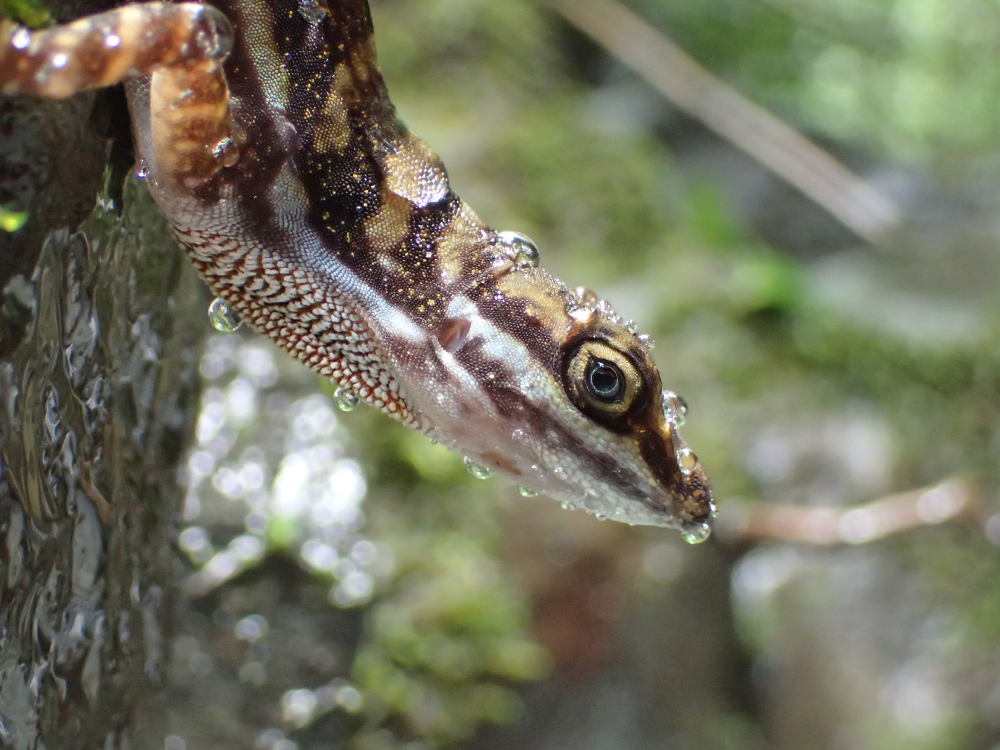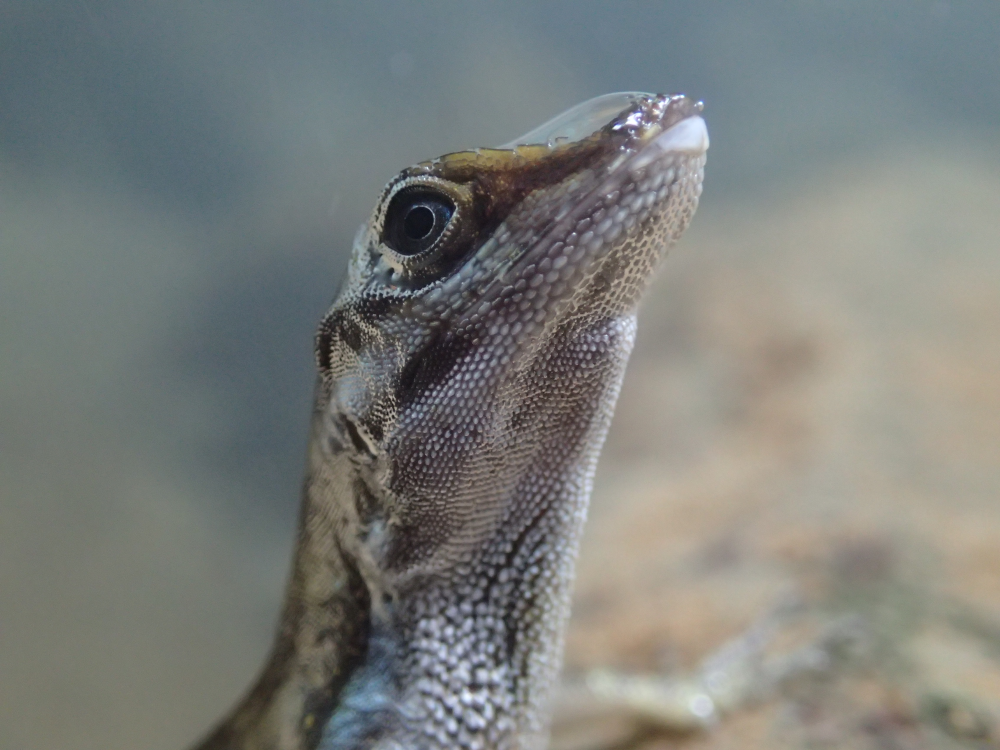In 2021, it was announced that a group of remarkable lizards had become the first vertebrates known to use bubbles for breathing underwater. It seemed anoles were using their air accessories as a kind of rebreathing equipment, but it was still up for debate as to whether it served a function or was simply a quirky accident. That is, until now.
For the first time, a scientist has been able to demonstrate that the air bubble hats do have a significant influence on how long anoles can dive under the water. Pretty sweet considering it’s a great way to swerve predators.
“It’s exciting and validating to confirm that these bubbles seem to have an important function in water anoles’ diving behavior,” said study author Lindsey Swierk of Binghamton University to IFLScience. “The idea that rebreathing bubbles allow anoles to dive for long periods is something that always seemed logical, but it hadn’t been experimentally tested.”
To test the theory, Swierk applied emollient to the noses of some anoles’ faces, preventing the formation of a bubble when they went underwater. The goal was to assess how the lack of a rebreathing bubble influenced rebreathing cycles, gular pumps (the flappy neck bit), and dive times.
The results showed that anoles wearing bubble hats could stay underwater 32 percent longer that those wearing emollient and no bubble. This suggests that the rebreathing bubble does have a functional role in underwater respiration, helping these lizards to hide from predators for longer.
Sometimes the air bubbles look like they’re on the point of escaping from the lizard, but mostly they don’t.
Lindsey Swierk
Avoiding predation is very high on the list of worries for anoles, a group of lizards Swierk describes as “the chicken nuggets of the forest”. Enjoyed by snakes and birds, they’re at risk from attack at all angles, but slipping underwater where they’re well camouflaged appears to be an effective defense against these animals, especially given they can remain submerged for up to 20 minutes.

Gonna need this anole’s skin care routine.
Image credit: Lindsey Swierk
For Swierk, the significance of the rebreathing bubbles raised the question of whether or not it’s a kind of physical gill, though more research is needed to test the idea.
“The basic idea behind a physical gill is that a small, air-breathing organism can respire underwater using the oxygen that moves from the water into an air bubble,” she explained. “While small invertebrates, like spiders and insects, can use physical gills indefinitely, it’s very unlikely that a lizard could do the same. However, we are studying whether physical gill action could supplement a lizard’s oxygen while underwater, helping to extend dives even a little longer.”
So one big question about scuba-diving anoles’ bubble hats answered and plenty more to dive into, but it’s safe to say Swierk’s enthusiasm for the behavior hasn’t worn thin.

Anoles’ rebreathing bubbles appear to increase dive time by up to 32 percent.
Image credit: Lindsey Swierk
“The simple fact that anoles can rebreathe without losing these air bubbles amazing,” she added. “Sometimes the air bubbles look like they’re on the point of escaping from the lizard, but mostly they don’t. It makes me wonder about the mechanics of how this works, and overall how semi-aquatic anoles are able to pull off this feat.”
The study is published in Biology Letters.
Source Link: Scuba-Diving Anoles’ Bubble Hats Proven To Lengthen Dives For The First Time